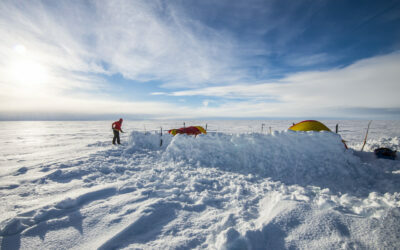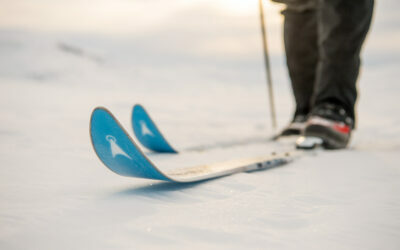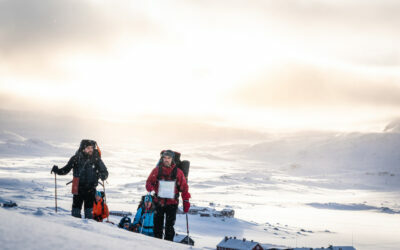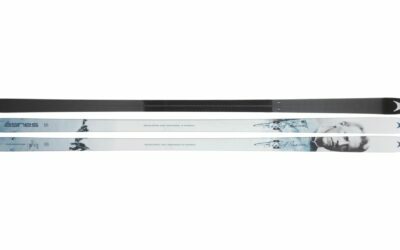New skins?
If you’ve just got some new skins, or your first full set for the mountains – boots, beacon, helmet, poles, skis and skins – you’ll be anxious to get your skins right.
Today, most skins come in fixed lengths and widths. They also have fixtures at the front, and preferably an adjustable fixture at the back, allowing you to adjust the length for your skins. Skins typically come in “clothes sizes”, from extra-small to extra-large. A glance at the size chart or packaging well tell you which one you need.
Does the skin have to cover the entire sole?
No. A skin made for getting you to the top of a mountain doesn’t have to cover the entire ski base. That would be a lot of skin. Neither the tip of the ski and the rear 20cm of the skin are used when you’re propelling yourself. It’s also not a big problem if the skin’s slightly narrower than the ski’s widest points. All you need is relatively good coverage underfoot. Less skin under the ski means less resistance. Which means better glide. You don’t want to lift your skis from the snow while you’re ascending. Generally, most “universal skins” come in 120–130cm widths. This should work in most cases.
Tailoring your skins

Building a winter windbreak for you tent
To build a windbreak from snow, or not to build a windbreak from snow? This question comes up a lot. Here’s our advice – with a tip for those who’d rather not make the effort…

Choosing bindings for cross-country BC skis
Not certain which bindings choose for cross-country skiing in the backcounty? Confused by the difference between NNN-BC or 75mm bindings? Cable-curious? Find all the answers here!

Mounting bindings on cross-country BC skis
If you’re going to mount bindings on cross-country skis built for breaking trail, you have a choice. You can let professionals do it for you and avoid water damage to the wooden core, screws sitting proud of the holes or crooked bindings… or you can bid farewell to your warranty cover, prepare the polyurethane glue and drill, and read on…

Which cross-country skis? And how long?
Choosing new cross-country BC skis is can be bewildering. We compare length, width, profile. We weigh ourselves and check again. We ask advice on forums. We change our minds repeatedly. So before you pull the trigger, set your mind at rest by reading this overview. If you’re still unsure, you can talk to the expert in your local specialist shop or contact Åsnes’s customer service – we answer questions the whole time and we can usually help!

What’s inside your skis?
What are the skis made of? How are they made? What sets Åsnes apart? Here’s that guide to the inside of our skis you were looking for!

Waxless or waxable skis?
Buying new skis and not sure whether to choose waxable or waxless bases? Maybe you think grip wax is tricky. Maybe you find the convenience of waxless is enticing. Here’s your path through the pros and cons (and the science!) of both…